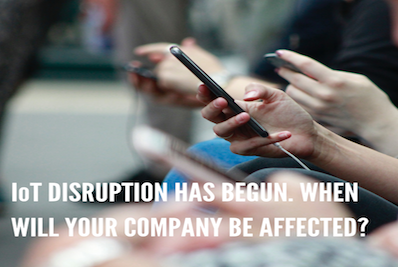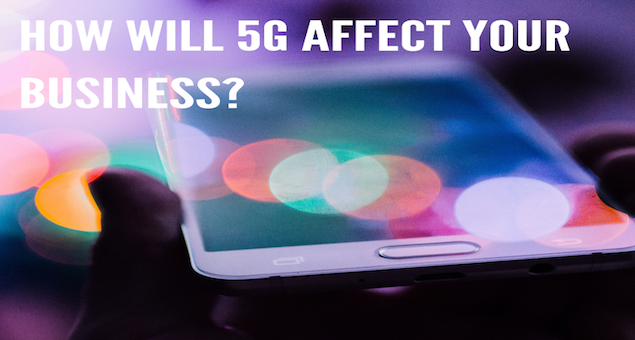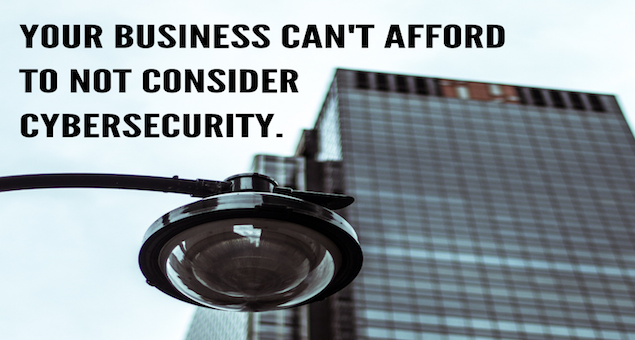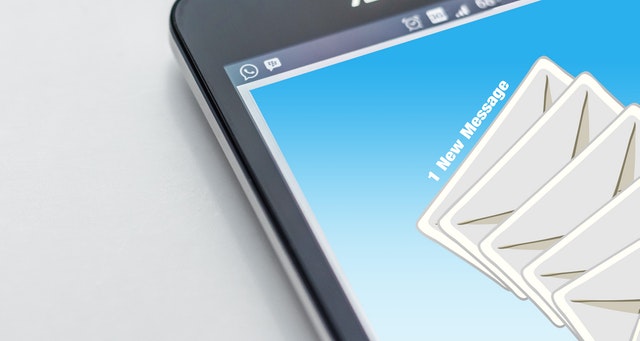




The word cyberattack has virtually become a household term thanks in part to high-profile attacks in recent years. Mention a company name like Equifax or Ashley Madison and it will likely conjure up very different thoughts than they would have just a few short years ago. These type attacks have impacted millions of consumers and businesses forcing the need (and responsibility) to protect your important data.
A vulnerability scan is a technique used to identify security weaknesses in a computer system. Security weaknesses are what cybercriminals look for to gain unauthorized access to a network resulting in…. you guessed it, a cyberattack. I could get all technical and start talking about ports, patches, and the Heartbleed bug, but similar to my other blogs my intention is to bring awareness to these terms in a non-technical way.
A vulnerability scan is performed using software which upon completion produces a report that lists out found vulnerabilities and (depending on the software) will give an indication of the severity of the vulnerability and basic remediation steps. Performing these scans with routine is a widely recognized security best practice among large corporations, however, small and medium-sized businesses often believe they don’t have the resources or the budget for this security technology. You should know there are free scanners available, as well as, free trial software which can be used to test your network. Although there are free options, it is relatively inexpensive to pay a professional to perform one for you.
I’ll leave you with this final thought. Since there is free software available to scan for vulnerabilities, what do you think “the bad guys” are doing with it? You guessed it, using it to find companies who have obvious vulnerabilities they can exploit. This brings to mind a well-known saying: “You don’t have to run faster than the bear to get away. You just have to run faster than the guy next to you”. You don’t need to have the best security, just don’t have the worst.
Next up: What is pen testing?
Click here for our previous post, “What is a Hosted PBX?”


Whether we like it or not: cybersecurity can’t be an afterthoughts and can’t be addressed with just traditional ad hoc and limited point solutions.

A question you might be thinking, but apprehensive to ask. Let’s face it, the term “cloud” is used so frequently it’s difficult to understand what it really is.
I will share information and helpful resources I come across which I hope will demystifies the cloud. So lets start with the basics: What is the Cloud?
The cloud is not a physical thing, it is a network of servers, and each server has a different function. Imagine putting all your files, documents and other information in a cloud in the sky. Wherever you go, you can see and access this cloud. You can store more files, use/edit documents, or delete stored info from anywhere as long as you have a computer, laptop, mobile phone or any other internet-enabled gadget. This is how the cloud works. Storage, hosting of files (such as music, photos, applications, videos, etc.), and other services are outsourced to web-based cloud hosting service providers.
So there you have it, the cloud demystified. Your files are placed on servers that are “hosted” by other companies all linked together by the Internet and labeled the cloud. A good example is think of Dropbox, a common file storage and sharing service that I use to store digital pictures. I had the privilege of spending a week in Scotland golfing and I took a million pictures on my cell phone. I only keep a few of my favorite pics on my phone and “uploaded” the rest to my Dropbox account. Now my pictures are securely stored in the cloud. But are they secure? How do I know that someone isn’t going to be able to access my pictures and laugh at me in a bunker?
The short answer is yes, it’s probably more secure than conventional data. Why? Well visit our blogs frequently as we will share fact and fictions about the cloud and the security of it.
Next Up: Cloud Security – Phishing

Cloud security is comprised of two different areas, each of equal importance. First is the security of your cloud provider (the company who provides the service that stores your information in the cloud) and second is your own security practices.
It is wise to have hardened security practices for your business, regardless of where your data resides. A lot of the issues around security are no longer technology issues, they are human issues. Jasmine W. Gordon, contributor to Tektonika, shares the following in her security post:
“Snapchat. Home Depot. The City of Calgary. What do these three entities (and countless other organizations) have in common? Data security breaches from human error, unfortunately. Each one of them faced expensive incidents as the result of simple employee mistakes.”
Don’t think for a minute “I am too small to be attacked”, because it happens to individuals and companies regardless of size, location(s) or revenue. One way to protect your company from human error is understanding and preventing phishing.
Phishing, pronounced “fishing”, is the fraudulent practice of sending emails purporting to be from reputable companies in order to induce individuals to reveal personal information, such as passwords and credit card numbers. An example of this is I receive emails from my bank letting me know my account password needs to be reset, providing a link to login and reset it. The email looks like it comes from my bank, however, the link they are directing me to is not my bank. Odds are if I click the link I will be directed to a site that also will look like my bank’s web site allowing me to login. Simple enough, now someone has my bank login credentials.
Tips: Hover your mouse over a link and verify the actual URL is the same as what the email shows. Be cautious, the link may look the same only off by a few letters. Another tip for businesses is to consider a phishing simulation. This is an effective way to test your employees’ security awareness and susceptibility to phishing tactics.
Next Up: Security questions you should ask your cloud provider.
Click here for our previous post, “What is the Cloud and is it Safe?”

Cloud security is an important topic for many reasons, not the least of which it is one of the primary reasons businesses prolong moving to it. In a Gartner “Is the cloud secure?” report republished in March of 2018, Jay Heiser Gartner research vice president, offers insight into the subject. In part Jay notes:
“The challenge exists not in the security of the cloud itself, but in the policies and technologies for security and control of the technology. In nearly all cases, it is the user — not the cloud provider — who fails to manage the controls used to protect an organization’s data.”
This made me think, what questions should I ask my cloud provider? Here are my top 5:
You should expect your provider to be able to answer these questions and the answers should give you the warm and fuzzy.
Up next: What the heck is the difference between a public, private and hybrid cloud?
Click here for our previous post, “Cloud Security – Phishing”

As if the cloud itself wasn’t enough we had to go ahead and complicate it by adding private, public and hybrid. While the term “the cloud” is certainly appropriate as a general term, the evolution of cloud computing has introduced different models and therefore the need for additional terminology. There are three general cloud deployment models: public, private, and hybrid.
In this post we offer a basic explanation of each cloud model. By basic we mean, if you were at a cocktail party and were to be asked which model you like best, you would not be clueless. Okay, let’s be real, I know it’s not likely to be the topic of conversation at a cocktail party, but a little knowledge never hurt anyone, right?
The word “server” is used in the below explanations, when you hear it think of a computer at the office that stores software programs or that “H” drive where everyone goes to find public files (Word, Excel, PowerPoint, etc.).
Public Cloud– A public cloud is where an independent, third-party provider owns and maintains the servers that customers can access over the internet. In a public cloud, server resources are shared by multiple companies, a model known as a multi-tenant environment. This is a cost-effective model since the expense of servers are shared by more than one company.
Private Cloud– For me this was the most difficult cloud model to wrap my head around, due in large part to differing opinions as to what constitutes as being private. Some would say the servers sitting on-premises in your datacenter are a private cloud, while others argue that just simply isn’t enough. In a private cloud model, the servers are owned by and dedicated to you and they can be located at your own datacenter or computer room, but they can also be hosted in a service provider’s datacenter. A private cloud can be managed by you, by the hosting provider or by a 3rd party.
Hybrid Cloud– While understanding the benefits and challenges of a hybrid cloud may not be that simple, explaining it is. A hybrid cloud is the use of both a public and private cloud allowing an organization to benefit from both models. To illustrate, imagine your company uses a software program for your annual employee review. Most of the year the software program is used infrequently, however, when it’s that time of year individuals are logging in and out of the program multiple times adding and removing information. The server needs to have sufficient resources to manage the increased activity (we all know the frustration of a slow program). Rather than purchasing a server for it to sit idle most of the year, you may elect to put this program in a public cloud. You then pay for the necessary server and their resources only when needed and used. However, the rest of your software programs are kept on-premises in a private cloud with both clouds being connected together.
Up next: Security awareness training, do we really need it?
Click here for our previous post, “Security Questions You Should Ask Your Cloud Provider

The “Internet of Things,” or the IoT, is best described as a physical network of connected “things.” So, what exactly is this connection of things”
One of the most highly visible and popular pieces of Internet of Things technology is the Nest, a smart thermostat that’s connected to the internet. This Wi-Fi-connected thermostat allows you to remotely adjust the temperature via your mobile device and also learns your behavioral patterns to create a temperature-setting schedule. According to Gartner, the IoT is the network of inanimate objects that contain embedded technology to communicate and sense or interact with their internal states or the external environment. Here are some other everyday examples of IoT devices you may be familiar with;
Smart pet feeders, health monitors, emergency response systems, automatic car tracking adapters, and more. Companies of all sizes are getting in and staking their claims. For large organizations that have already invested in IoT, the focus has been on internal operational improvements. The primary business case for IoT includes:improved efficiencies, improved data management, cost savings and enhanced asset utilization. They also hope to create new revenue streams through new products and services. Having the right data management strategy in place to support these efforts, however, remains key.
Without such a strategy, companies may miss out on making key business decisions.
Recent Comments